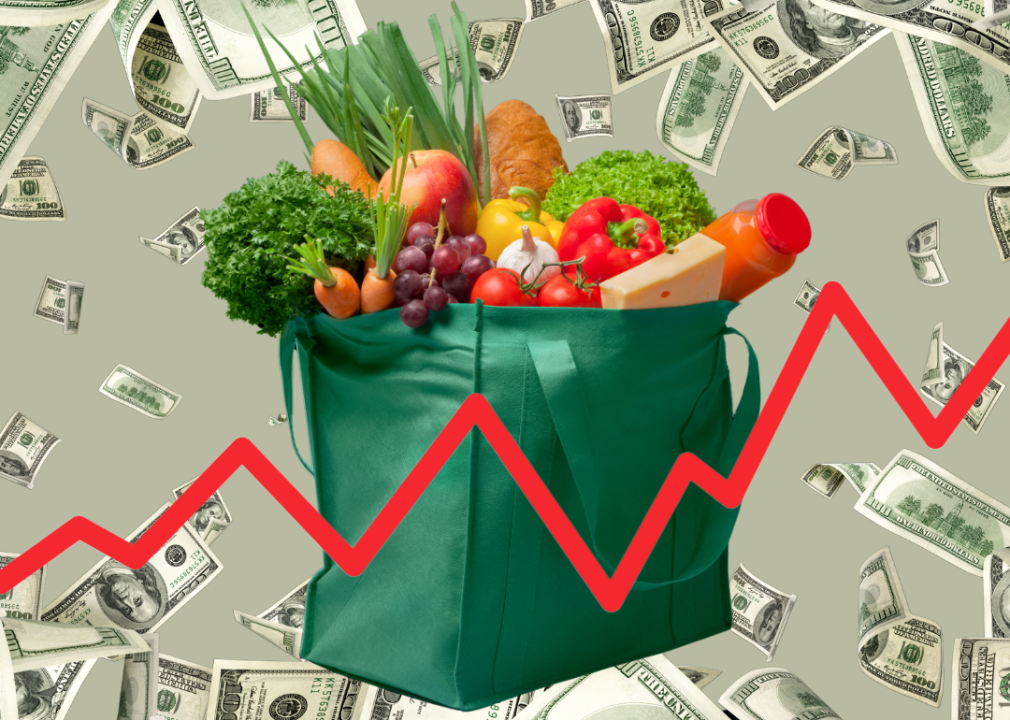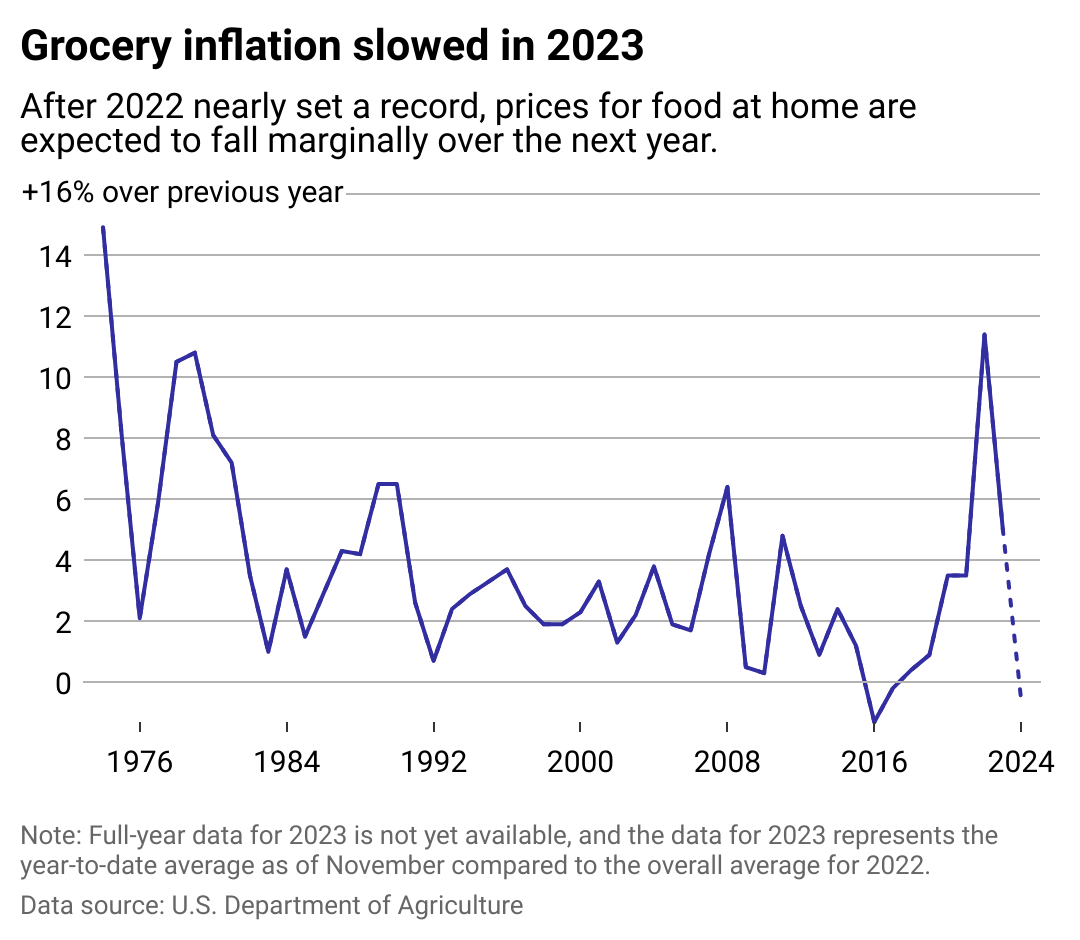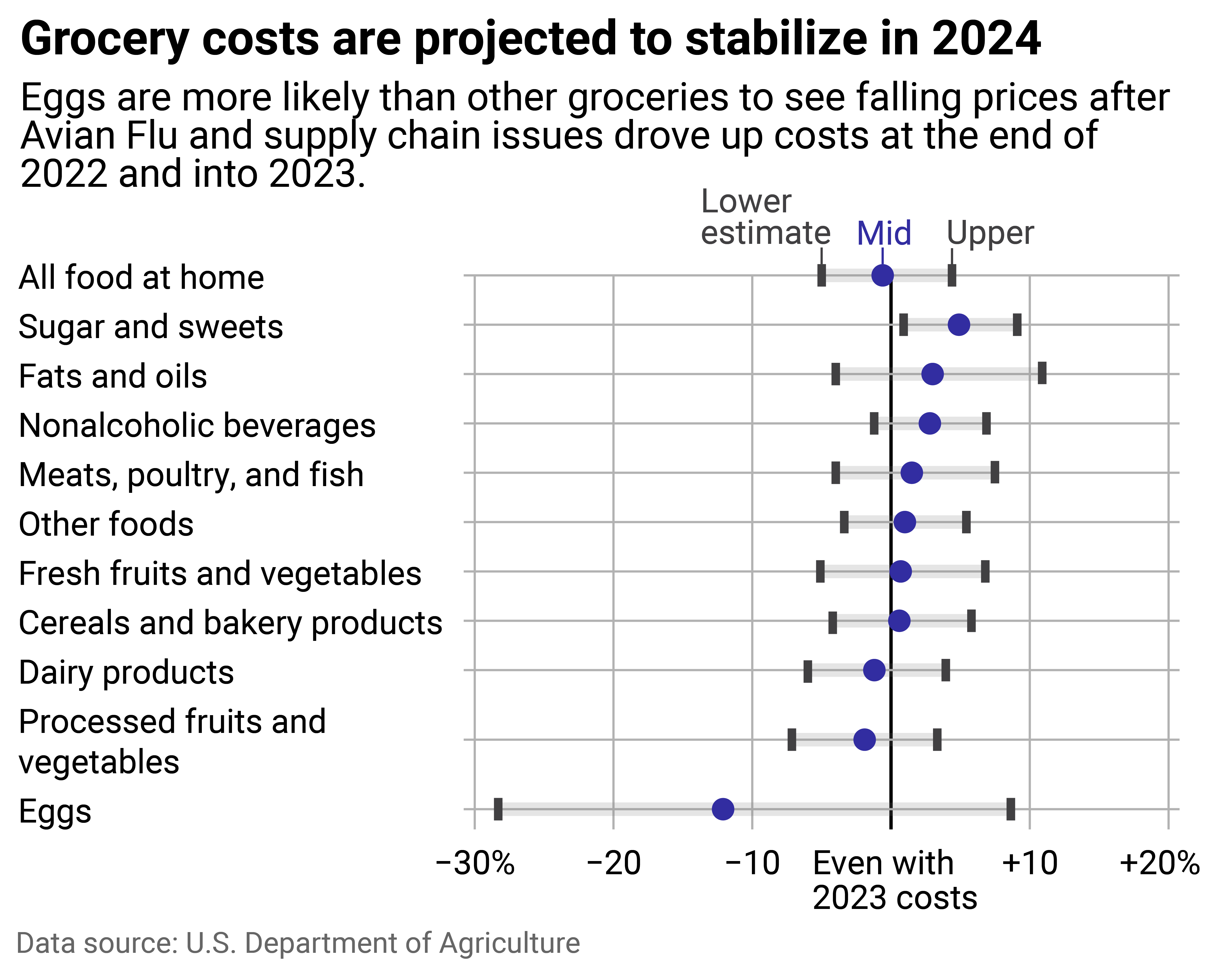Will grocery inflation cool in 2024? Here's what forecasts say

Photo Illustration by Michael Flocker // Stacker // Canva
Will grocery inflation cool in 2024? Here’s what forecasts say
An illustration of a bag of groceries against a background of cash with a red line chart in the foreground.
The vibes at the grocery store have felt off-kilter ever since Americans weathered the great toilet paper shortage of 2020. Inflation and its stealthy sidekick, shrinkflation, have become a painful part of the grocery shopping experience for the past four years.
It’s a rude awakening after a decade of relatively stable food prices. The cost of groceries actually deflated, or decreased, from 2016-2017, according to Department of Agriculture data. When might we see that again, and could 2024 spell relief for shoppers worried about skyrocketing prices at the checkout counter?
FoodReady used data from the Department of Agriculture’s Economic Research Service to examine experts’ predictions about inflation for food at home in 2024. The inflation data from the Bureau of Labor Statistics that serves as the foundation of the USDA’s forecasting takes into account shrinkflation, the practice of charging the same price for less product.
An NPR report found that by summer 2022, a carton of Kleenex had 60 tissues in it, down from 65 several months prior. Chobani shrunk one of its single-serve yogurt products by almost a full ounce.
Experts say these changes to our grocery foods are unlikely to see a reversal. Smaller portions and higher prices will be the new normal from here on out, putting pressure on consumers to find additional income or get by with less at home.
The past few years of inflation aren’t the worst in the modern era. The most significant bouts happened around the Great Inflation period of the 1970s and 1980s—when prices rose rapidly in response to years of wage gains and greater purchasing power post-WWII.
But forecasts suggest that the pain of this high-inflationary period at the supermarket could peter out quicker than it did in the late 20th century.
![]()

FoodReady
Grocery inflation is expected to ease even more in 2024
Line chart showing grocery inflation slowed down in 2023. After 2022 nearly set a record, prices for food at home are now expected to fall marginally over the next year. The midpoint estimate is a decline in 0.6% for food at home.
Overall decreases in the cost of grocery foods, as seen in 2016 and 2017, are rare, and the Federal Reserve considers inflation of around 2% or lower an acceptable rate. But the rate at which groceries increased in price in 2020 hit levels last seen 10 years prior, delivering a shock to consumers that worsened in 2022 as the inflation rate reached a nearly 50-year high.
Higher costs for labor and inputs are only partly to blame for the increased prices in recent years. The series of disruptions set off by the COVID-19 pandemic and a period of solid wage gains made consumers more willing to pay a premium—a situation corporations have been able to leverage to cover their expenses and reel in large profits.
Only retirement-age Americans will recall a year when consumers faced grocery prices that rose faster than in 2022. The year was 1974, and sellers hiked food prices higher than ever in a single year to boost the amount of money they could spend on processing and marketing foods.

FoodReady
Inflation is expected to slow across most aisles
Dot plot showing grocery costs are projected to stabilize in 2024. Eggs are more likely than other groceries to see falling prices after avian flu and supply chain issues drove up costs at the end of 2022 and into 2023.
Not all grocery food prices will likely stabilize similarly this year. For one, projections suggest consumers can look forward to lower prices for a carton of eggs.
Eggs were one of the most prominent food inflation complaints in 2023, even as their prices decreased throughout the year. The USDA predicts egg prices will continue to fall in 2024, estimating costs could dip about 12% below where they were in 2023.
On the other hand, the cost of items such as meat, nonalcoholic drinks, cooking oils, and sweet snacks and candy is expected to rise slightly over the year compared to 2023. Most other aisles, however, see middle estimates closer to 0%, meaning prices won’t increase or decrease dramatically.
Story editing by Ashleigh Graf. Copy editing by Kristen Wegrzyn.
This story originally appeared on FoodReady and was produced and
distributed in partnership with Stacker Studio.





